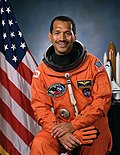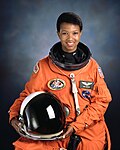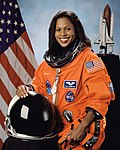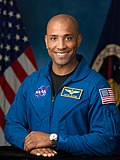
African-American astronauts are Americans of African descent who have been part of an astronaut program, regardless of whether they have traveled into space. African-Americans who have been passengers on space-tourist flights are also included in this article, although there is disagreement over whether such passengers should be referred to as "astronauts." [1]
























